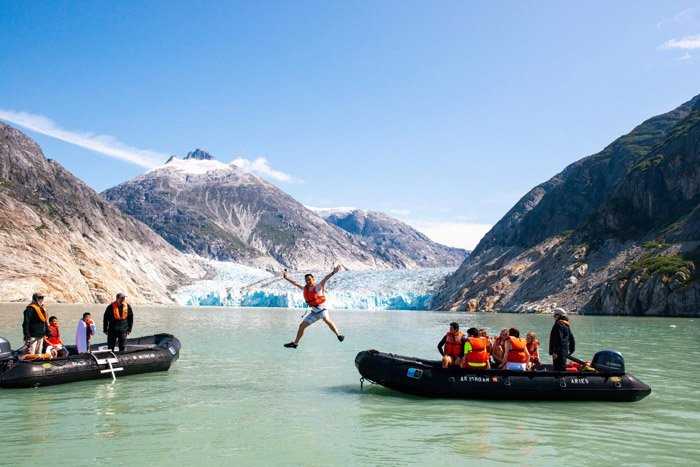Alaska’s last significant glacial advance is aptly referred to as the Little Ice Age. It began in the twelfth century and continued into the late nineteenth century, with some glaciers reaching maximum advances in the early twentieth century. However, a general glacial retreat began in the eighteenth century throughout Southeast Alaska. This is likely when the glaciers in Tracy Arm-Fords Terror began receding.
Our morning featured an almost 30-mile, awe-inspiring transit down Endicott Arm fjord, surrounded by steep walls consisting of slate, phyllite, schist, and occasional limestone, less than a mile apart and rising to elevations of 2,000 feet or more. We stopped for photo opportunities at numerous waterfalls and proceeded slowly through collections of deep, blue icebergs and smaller growlers; a name given for the sound the small ice chunks made when passing underneath the boats hull.
Dawes Glacier, the destination for our morning, is a tidewater glacier in direct contact with the ocean. As the tides of Southeast Alaska rise and fall, sometimes experiencing more than 20 vertical feet of change, the fluctuating water level stimulates the floating edge to calve off large chunks of ice, often in dramatic fashion. With our expedition landing craft, we ventured among the multitudes of icebergs, harbor seals, and bergy bits seeking the best views of the glacier face. The brilliant aquamarine hues, intricate natural ice sculptures, and the nearly incomprehensible scale of the fjord and glacier together were magnificent! A determined and daring few capped off this wonderful day with a cold-water plunge, swimming alongside icebergs back dropped by the glacier itself, in true Alaskan fashion.









